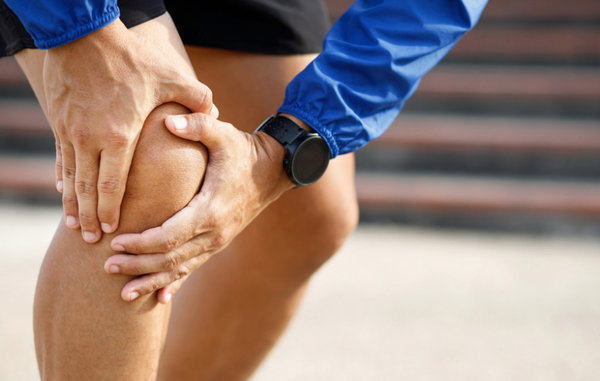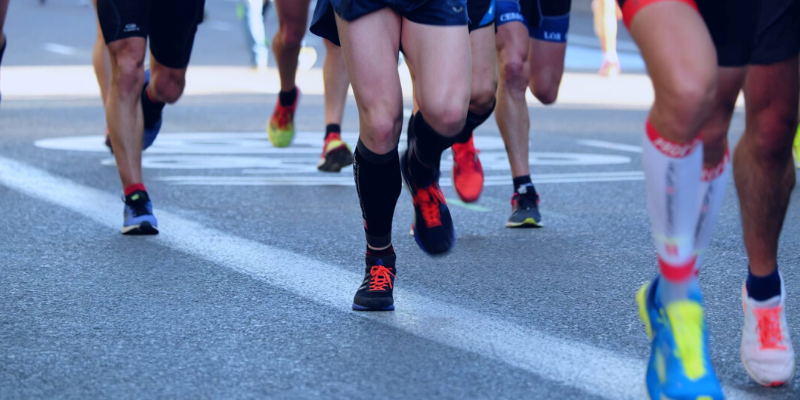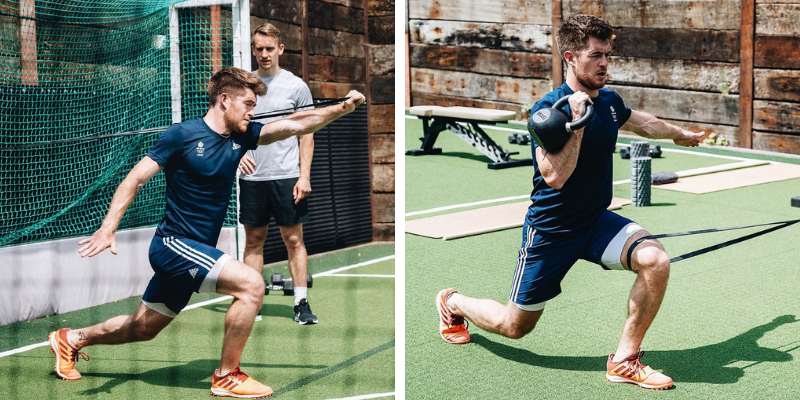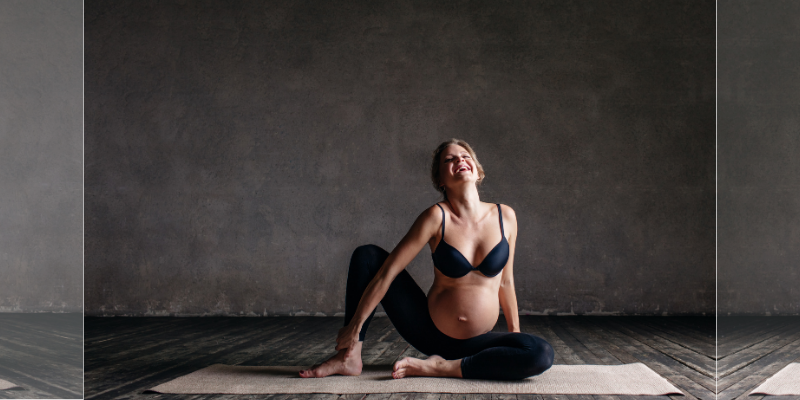
Knee pain
This explains why knee injuries are so commonplace in sport and why many people in the general population suffer from daily knee pain. Hjertholm explains:
“Having sore knees is common and isn’t usually a sign of anything serious. There are many possible causes, which can range from a simple muscle strain or tendonitis, to some kind of arthritis. Sometimes a cause can’t be found.”

She goes on: “As you age, getting knee pain may become more common. You’re also more at risk of getting knee pain if you are overweight.”
Knee injuries, as opposed to just knee pain, however, can range from mild to serious and can come in various guises. Hjertholm sights the most common knee injuries as injuries to ligaments such as the anterior cruciate ligament (ACL), torn meniscus, knee bursitis and patellar tendinitis.
Knee ligament injuries
In certain sports such as; netball, football, basketball and skiing, knee ligament injuries are particularly prevalent. Professional ski coach Jake Richardson from The Cross Collective knows only too well the trials and tribulations of knee injuries:

“My right knee is in a pretty bad way. I suffered a medial ligament tear in 2015, and once I started on the rehab process, it made me realise I had other problems with the same knee – probably caused by years of racing and ripping around the mountain trying to keep up with my athletes.”
He goes on to say: “I know it needs an operation, but it is finding the right time to do it. The knee joint needs a good clean out, and I get quite a lot of ‘squelching’. Going downstairs for me is a ruthless reminder of what needs to be done. So, in the meantime I have been learning how to manage the knee pain and make sure I can continue coaching on the mountain.”

Bioelectrical therapy
Richardson is a regular user of bioelectrical therapy to try and manage his knee pain:
“I manage my knee pain in two ways which complement each other: exercise and my NuroKor devices. I cycle a lot to build the muscles around my knee to compensate for the internal weakness. My NuroKor mibody helps me not only recover so I can exercise sooner, but deal with the pain after a day chasing my students around the mountain."
"By using NuroKor it means I am able to carry on coaching, and get back on the mountain everyday.”

Hjertholm is in agreement with Richardson and believes bioelectrical technology like NuroKor’s can be a very good tool for reducing pain, swelling and inflammation in a natural way. She gives details:
“With a knee injury, you almost always have some type of swelling and inflammation, which in turn can cause more pain, as it causes stress on the ligaments and joints. Bioelectronics increase blood circulation and can help reduce the swelling and inflammation”.

She goes on to say:
“These types of devices are a fairly low cost when you compare it to regular physical therapy treatments, and you can use them as much as needed to keep your knee pain under control, as this is a completely natural method of treatment.”

She also suggests that NuroKor’s bioelectrical devices can also be used to activate and strengthen the muscles around the knee. She says:
“A lot of people find it's easier to do specific strengthening training with bioelectronics, as it can help to reduce the level of pain during training.”

Knee rehab
When a knee is first injured Hjertholm recommends to, “give your knee some rest, apply ice to reduce swelling, wear a compression bandage, and keep your knee elevated.”

Once the initial swelling is dealt with, it is important to consult medical professionals, including physiotherapists, about the next course of action. Dealing with a ligament strain will be different to patellar tendinitis, for example.
A physiotherapist will be able to guide patients on how long their recovery might be and will design a rehab programme aimed at recovery and then strengthening of the knee and the relevant muscle groups.

Tips to avoid knee injuries
Although knee problems are common, there are ways to help avoid injuries and pain. Hjertholm’s number one tip is ‘to keep your leg, hip and gluteal muscles strong’. These are muscles people don’t often associate with the knee, but that are vital to strengthening the core muscles.
“Strong core muscles are very important for good posture and healthy skeletal alignment, both of which are necessary to equally distribute pressure on joints and protect knees from sustaining too much pressure.”

Hjertholm has some final words of advice for avoiding knee pain: “Keep active and maintain a healthy body weight and limit excessive stress in your knee where possible. Keeping active can also help to prevent the pain - just make sure to warm up first!"
"Using bioelectronics on a regular basis will also definitely help you both prevent knee problems, as well as help you treat problems you may experience through a lifetime.”

Ski coach Jake Richardson lives by a similar philosophy;
“If you can’t really say no, to help your poor knees - stretch, exercise and use drug free pain relief alternatives, like NuroKor!”
A number of our NuroKor athletes and customers use their NuroKor mibody device or mitouch to help with injury rehab and pain. Learn more about how NuroKor can help pain management.
Jake Richardson is founder of The Cross Collective which offers coaching to young ski cross racers. Find out more on the Cross Collective website



